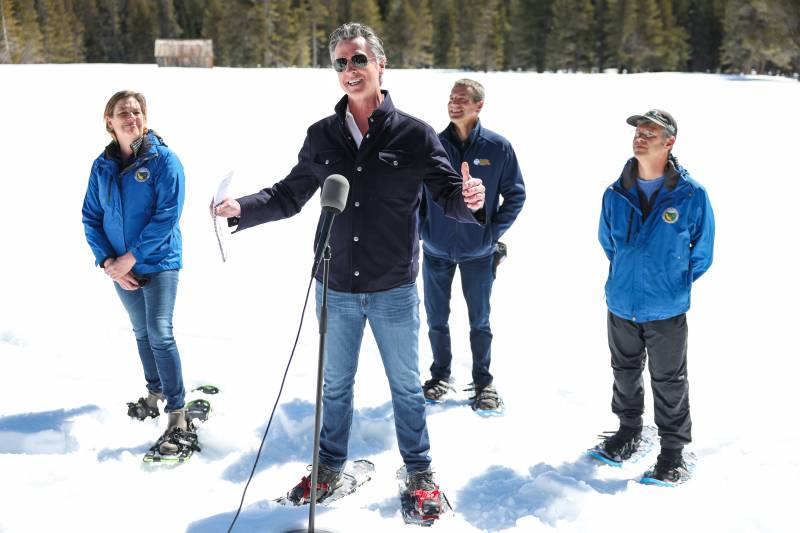“Those are pretty healthy numbers,” UCLA climate scientist Daniel Swain said. “From a short-term water supply problem, we’re not going to have major issues in California.”
With climate change “an urgent threat,” the state’s sprawling plan, updated every five years, addresses three key areas: strengthening watersheds, addressing climate change and closing a gap in “long-standing inequities” in water management. Planning with equity in mind is important because the report notes that water supplies will likely decrease by 10% by 2040, “challenging many vulnerable Californians in accessing their human right to water.”
Newsom also lauded an endeavor to potentially build a new reservoir and a controversial plan to build a 45-mile water tunnel beneath the Sacramento-San Joaquin River Delta and said the project is “critical if we’re going to address the issue of climate change.”
The announcement comes after the state’s new conservation rules received strong criticism. If the regulations go into effect, they will likely ease standards, giving water managers more time to comply, and environmentalists argue that this will lead to smaller water savings statewide.
Advocacy groups, like the Community Water Center, applaud the state for focusing on equity and calling out a lack of inclusion in the world of water management. But Abraham Mendoza, the group’s policy manages, said the plan does “not speak to solving the problem in a timely manner.” He said funding and solutions are needed for “the infrastructure to implement community-driven solutions, programs for affordability.”
‘Average is awesome’
In January, the snowpack measured just 25% of the average, and scientists warned of a potential “snow drought.” Water managers worried storms wouldn’t build it up and that the long-term trend of a shrinking snowpack would hold true this winter. But California’s luck changed in February as storm after storm rolled over the state. Then another in early March added as much as 12 feet of snow to the height of the Sierra.

